
In October 2022 a few members of Push Bikes cycled from Selly Oak to Perry Barr to look at new cycling infrastructure (a so-called cycling infrastructure safari). In particular, we looked at Selly Oak, the link from Cannon Hill Park to the A38 blue route, and the extension of the A34 blue route to Perry Barr. In this article I am looking at the link from Cannon Hill Park to the A38 blue route, which was mainly funded through a national government junction safety fund from 2018. The Pershore Road / Priory Road junction was chosen for the scheme because of the killing of Dr Suzanna Bull in 2017 as she was cycling across it.
At the end of this article I've included photos of the route with comments - you might want to skip ahead to those and then come back to the detailed discussion, as it may make more sense after you have seen the photos.
Overall impression of the route
This spur off the A38 route adds a safe traffic-free link to Cannon Hill Park which is generally good quality, but there are some design flaws that will have an impact on how comfortable and attractive it is to use. At the Pershore Road / Priory Road junction the safety of people walking across the junction has been greatly improved from the previous situation with no signal controlled pedestrian crossings at all, although the situation for people cycling along Pershore Road has potentially been worsened.
Detailed discussion
Birmingham City Council (BCC) needs to adopt a network approach to planning cycle routes, rather than developing each new linear route in isolation. The failings of that approach are evident in the tight staggered toucan crossing at the Bristol Road / Priory Road junction that connects this route to the A38 cycle track, and also in the poor conditions for cycle users proceeding along Pershore Road across the junction with Priory Road. Moving forward, LTN 1/20 states that all new schemes should provide appropriate cycling links at junctions for all directions people may cycle (see section 10.3.2), so hopefully BCC planners will take that onboard. The linear routes that BCC has delivered along the A38 and A34, in particular, are great to cycle on, but they don't cover all the different directions that people may want to cycle - the goal must be to develop a dense network of cycle infrastructure so that the whole of Birmingham is attractive and safe to cycle around.
In the original consultation on the A38 route, we pointed out that there would have to be an extension of the cycle track down Priory Road, and that that should be incorporated into the original design. Although our comments were ignored at the time, we have subsequently been proven right. In the consultation on this scheme, we pointed out that there would be difficulties for people cycling along Pershore Road and that the plans should be amended to accommodate people cycling in that direction. Again our comments were ignored, and the consequence is a dangerous implementation of segregated cycle lanes creating conflict points between people cycling straight ahead and motor traffic turning left. We don't spend time responding to consultations because we have nothing better to do with our time, but because we believe that our suggestions would improve the plans that are put forward. It would be good to see changes made to plans based on our suggestions.
Moving on from the two main junctions, along Priory Road, the cycle track has a vertical kerb that drops down to the adjacent footpath, which is a bad idea. Elsewhere in Birmingham trapezoidal strips have been used between cycle tracks and footpaths to provide an edge that can be felt by people with visual impairments, but which does not present a hazard to cycles (see section 6.2.8 of LTN 1/20). This is particularly useful in sections where there are space constraints on the width available to active travel, such over the Soho Loop canal bridge on Dudley Road (see the photos below). The raised cycle track alongside Priory Road also has an issue where it dips down for a pedestrian crossing - on this section of downhill track, where people may be cycling at 15 mph, that dip may take people by surprise and lead to accidents. It would have been better to gradually raise the footpath to the level of the cycle track at that point, to avoid sudden changes in levels on the cycle track.
On the section of the route opposite Edgbaston Stadium, it crosses two junctions - first the junction for The Ashes road to a development of private flats, and the second for the entrance to the Cannon Hill car park. At the mouth of The Ashes, the toucan crossing has been upgraded and straightened, giving a direct crossing experience for people walking and cycling. However, at the entrance to the Cannon Hill car park, the cycle track has give-way markings for the junction mouth, contrary to the plans in the initial consultation, because of concerns that inattentive drivers would crash into the back of cars turning into the car park. The highway here has been designed to smooth the path for poor driving, rather than facilitating progress for people cycling. The minimum that should have been done was to build out the pavement (and cycle track) to narrow the junction mouth to reduce the speed with which motor vehicles can turn in and out, as well as reducing the distance that people need to walk and cycle across. However, the changes to the Highway Code in January 2022 (after the designs were finalised, but before the work was completed) mean that car drivers should now give way to people waiting to cross this junction, resulting in the situation that breaking up the cycle track was intended to avoid. The message from the government through those changes is that people driving motor vehicles should expect vehicles in front of them to stop at junction mouths, and they should be looking out for that. Highways engineers should not be designing junctions that smooth the path for poor driving, but instead implementing designs that make life easier for people walking and cycling across junctions.
Cannon Hill Park Entrance
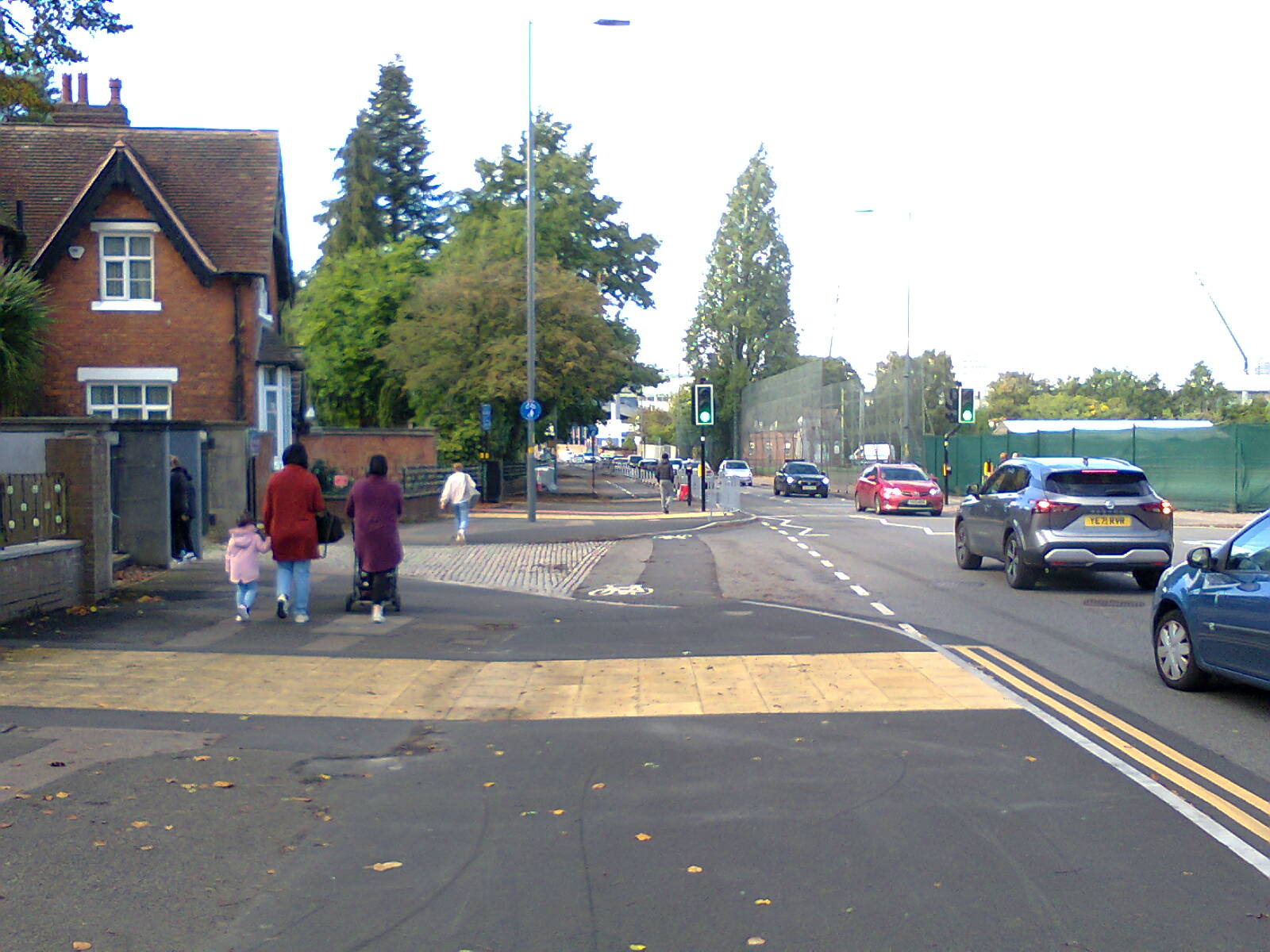
Cycle track on Edgbaston Road

Cycle Track Approaching Car Park Entrance

Entrance to Cannon Hill Car Park
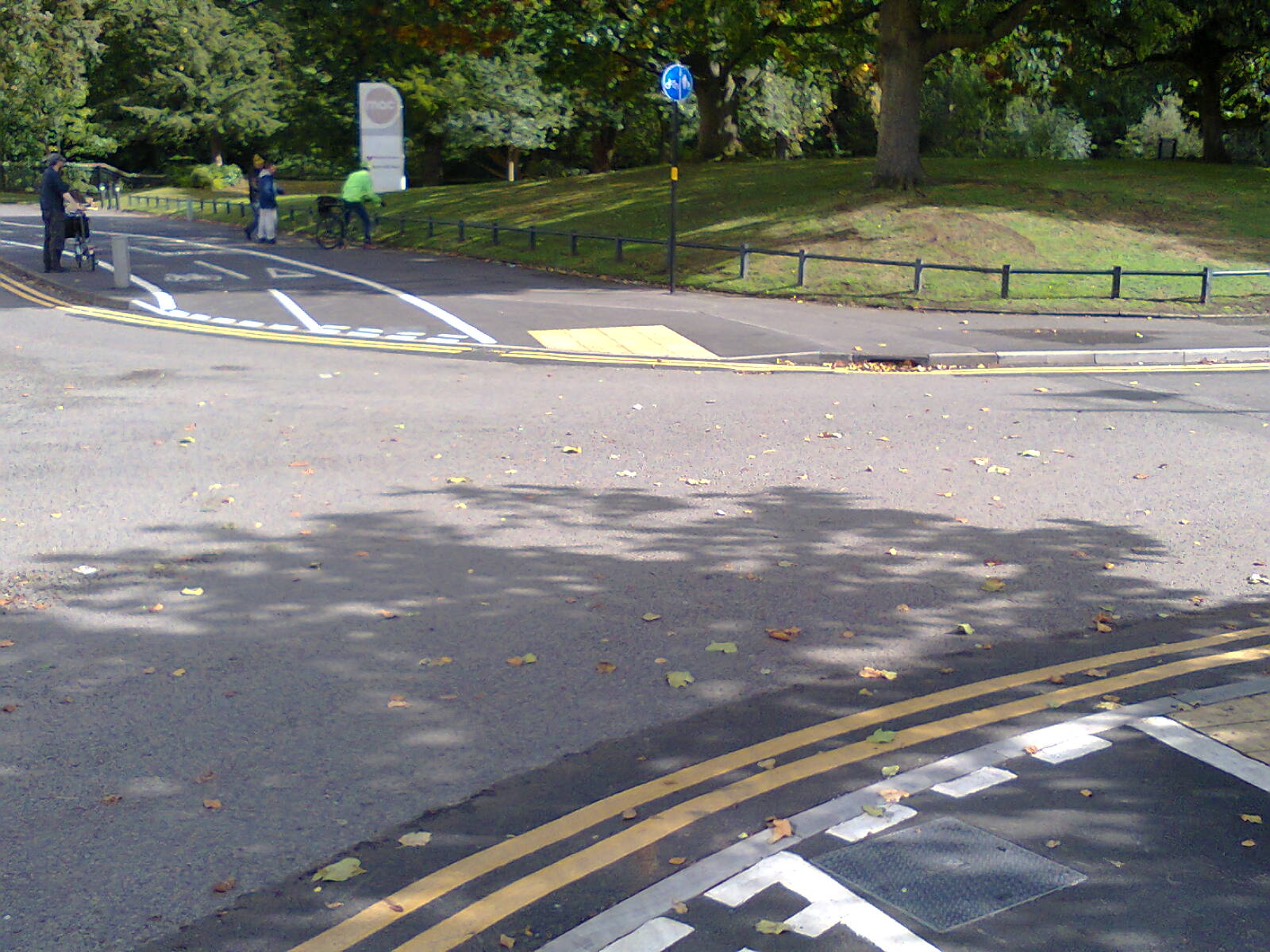
Diagonal Cycle Crossing Over Edgbaston Road

Cycle Crossing on the Pershore Road Priory Road Junction

Pedestrian Crossing at Pershore Road Priory Road Junction
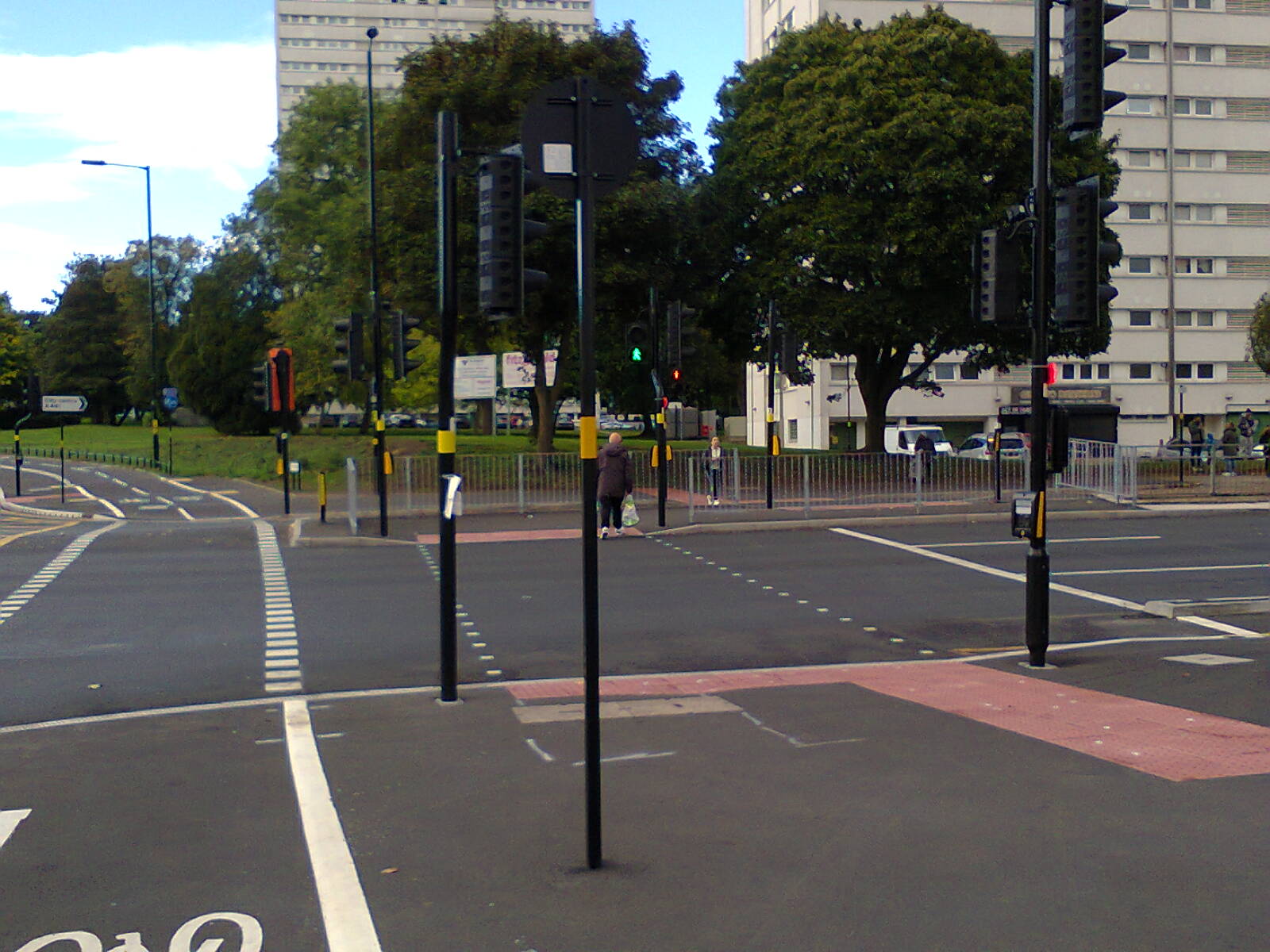
Cycle Lane Along Pershore Road at Priory Road Junction

Cycle Track on Priory Road Approaching Pershore Road
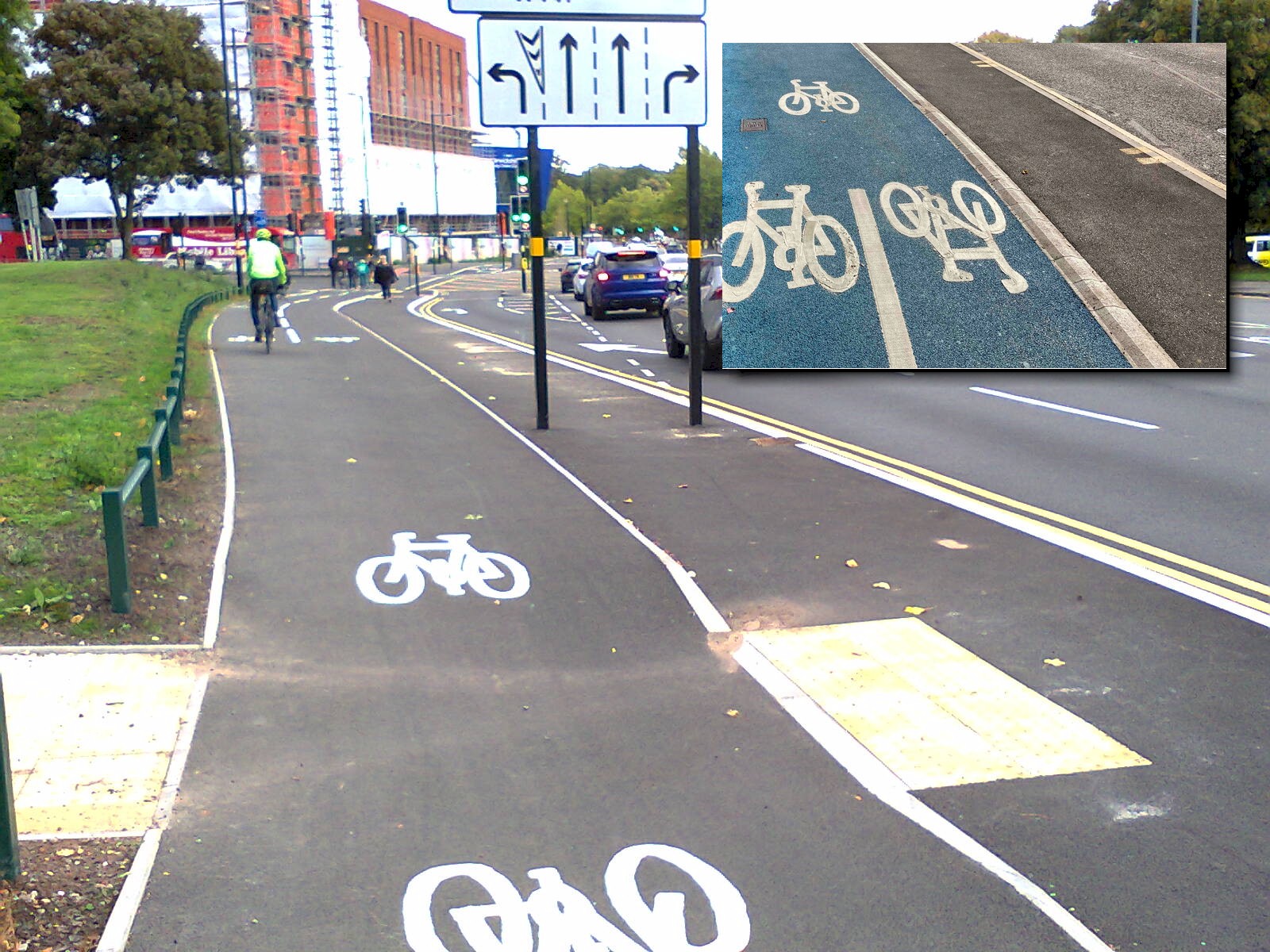
Bus Stop Bypass on Priory Road

Staggered Toucan Crossing on Bristol Road
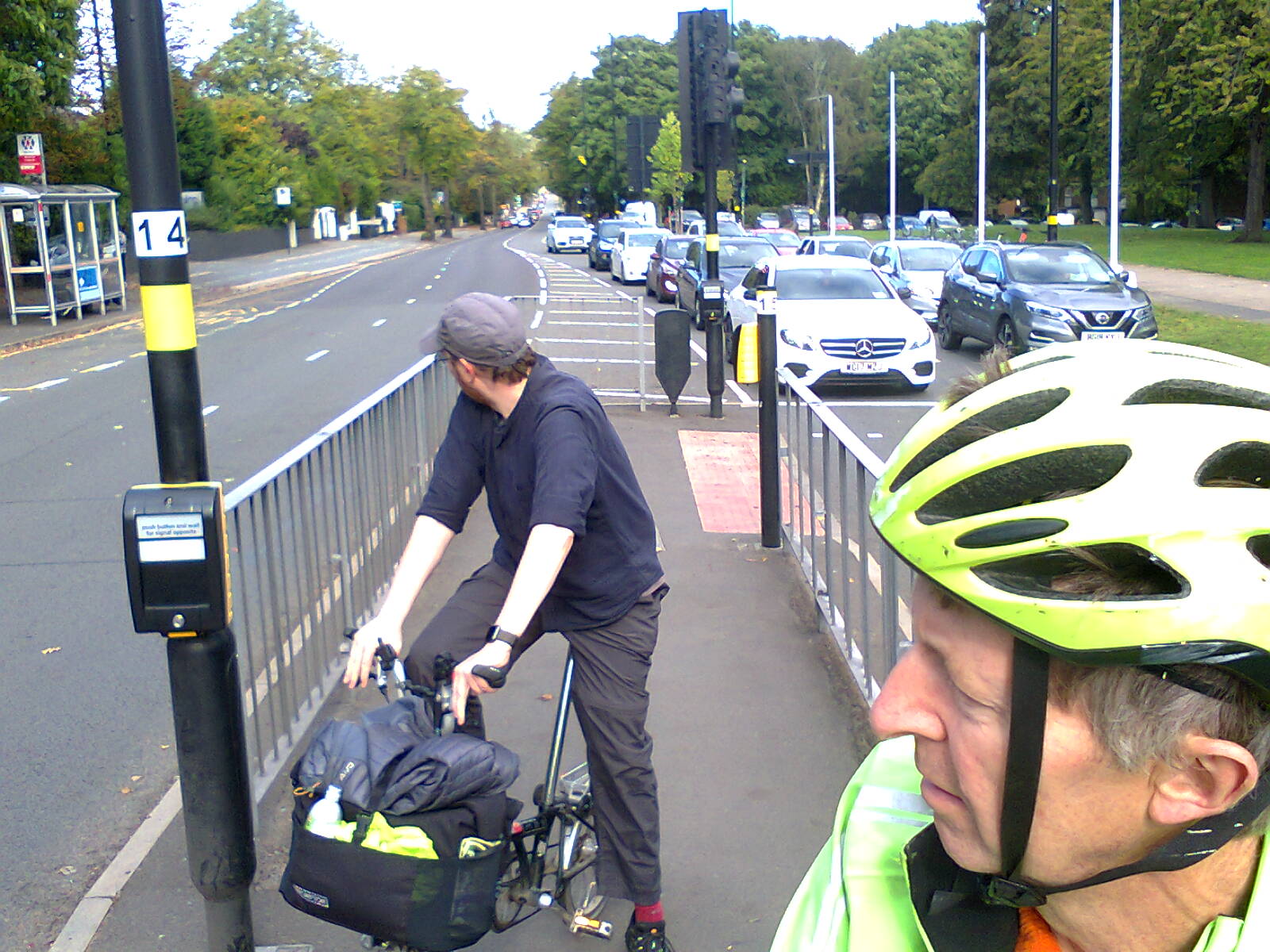
Back-to-Front Staggered Toucan Crossing



